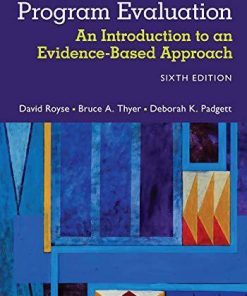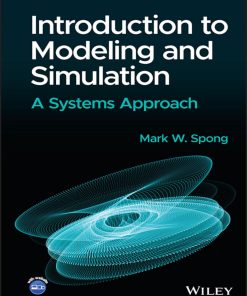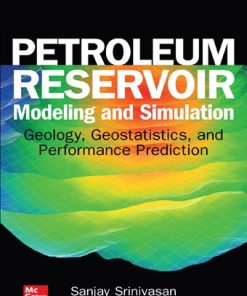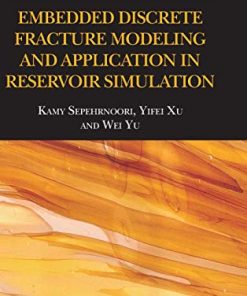An Introduction to Multiphase, Multicomponent Reservoir Simulation Matthew Balhoff 9780323992367 0323992366
$50.00 Original price was: $50.00.$25.00Current price is: $25.00.
An Introduction to Multiphase, Multicomponent Reservoir Simulation Matthew Balhoff – Ebook Instant Download/Delivery ISBN(s): 9780323992350,0323992358,9780323992367,0323992366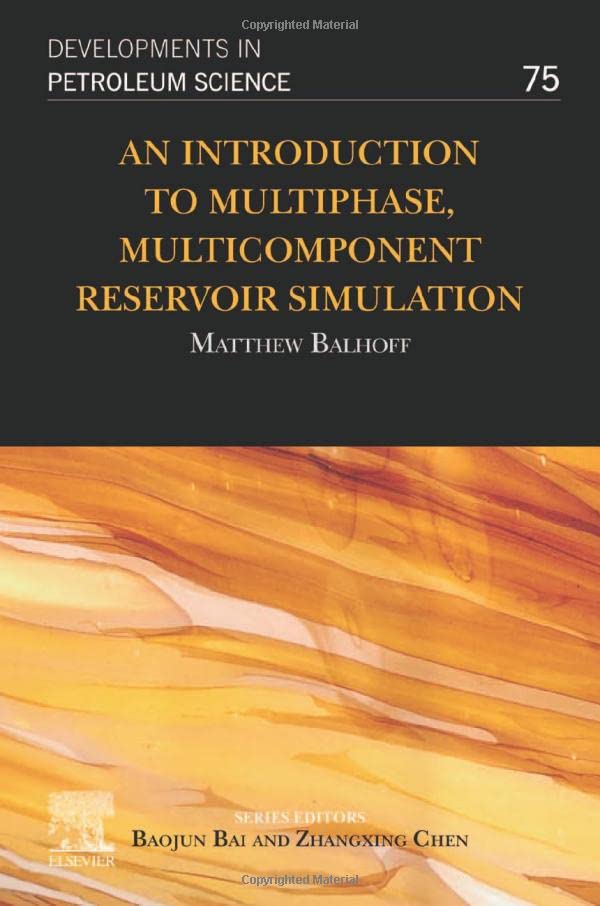
Product details:
- ISBN 10: 0323992366
- ISBN 13: 9780323992367
- Author: Matthew Balhoff
An Introduction to Petroleum Reservoir Simulation is aimed toward graduate students and professionals in the oil and gas industry working in reservoir simulation. It begins with a review of fluid and rock properties and derivation of basic reservoir engineering mass balance equations. Then equations and approaches for numerical reservoir simulation are introduced. The text starts with simple problems (1D, single phase flow in homogeneous reservoirs with constant rate wells) and subsequent chapters slowly add complexities (heterogeneities, nonlinearities, multi-dimensions, multiphase flow, and multicomponent flow). Partial differential equations and finite differences are then introduced but it will be shown that algebraic mass balances can also be written directly on discrete grid blocks that result in the same equations. Many completed examples and figures will be included to improve understanding.An Introduction to Petroleum Reservoir Simulation is designed for those with their first exposure to reservoir simulation, including graduate students in their first simulation course and working professionals who are using reservoir simulators and want to learn more about the basics.
Table contents:
Chapter 1. Review of reservoir rock and fluid properties
1.1. Introduction
1.2. Overview of reservoir engineering principles
1.3. Definitions
1.4. Phase behavior
1.5. Rock and Fluid Properties
1.6. Petrophysical properties
1.7. Reservoir initialization
1.8. Pseudocode
1.9. Exercises
Chapter 2. Phase mass balances and the diffusivity equation
2.1. Introduction
2.2. Phase mass balances
2.3. The continuity equation
2.4. The diffusivity equation
2.5. Analytical solutions
2.6. Exercises
Chapter 3. Finite difference solutions to PDEs
3.1. Introduction
3.2. Taylor series and finite differences
3.3. Discretization of the parabolic diffusivity (heat) equation
3.4. Boundary and initial conditions
3.5. Solution methods
3.6. Stability and convergence
3.7. Higher-order approximations
3.8. Pseudocode for 1D, single-phase flow
3.9. Exercises
Chapter 4. Multidimensional reservoir domains, the control volume approach, and heterogeneities
4.1. Introduction
4.2. Gridding and block numbering in multidimensions
4.3. Single-phase flow in multidimensions and the control volume approach
4.4. Wells, boundary conditions, and initial conditions
4.5. Reservoir heterogeneities
4.6. Matrix arrays
4.7. Pseudocode for single-phase flow in multidimensions
4.8. Exercises
Chapter 5. Radial flow, wells, and well models
5.1. Introduction
5.2. Radial flow equations and analytical solutions
5.3. Numerical solutions to the radial diffusivity equation
5.4. Wells and well models in Cartesian grids
5.5. Inclusion of the well model into the matrix equations
5.6. Practical considerations
5.7. Pseudocode for single-phase flow with constant BHP wells
5.8. Exercises
Chapter 6. Nonlinearities in single-phase flow through subsurface porous media
6.1. Introduction
6.2. Examples of nonlinearities in single-phase flow problems
6.3. Numerical methods for nonlinear problems
6.4. Pseudocode for Newton’s method
6.5. Exercises
Chapter 7. Component transport in porous media
7.1. Introduction
7.2. Transport mechanisms
7.3. Component mass balance equations
7.4. Analytical solutions
7.5. Exercises
Chapter 8. Numerical solution to single-phase component transport
8.1. Introduction
8.2. Finite difference solution to the ADE in 1D for a single component
8.3. Discretization of advective terms
8.4. Wells and boundary conditions
8.5. Solution methods
8.6. Stability
8.7. Numerical dispersion
8.8. Channeling and viscous fingering
8.9. Multicomponents, multidimensions, and additional forms
8.10. Pseudocode for component transport
8.11. Exercises
Chapter 9. Numerical solution to the black oil model
9.1. Introduction
9.2. The black oil model
9.3. Finite difference equations for multiphase flow
9.4. Solution methods
9.5. Interblock transmissibilities and upwinding
9.6. Stability
9.7. Wells and well models
9.8. Pseudocode for multiphase flow
9.9. Exercises
Chapter 10. Numerical solution to multiphase, multicomponent transport
10.1. Introduction
10.2. Compositional equations for multiphase flow
10.3. Finite difference equations
10.4. Solution method
10.5. Oleic–aqueous bipartitioning components
10.6. Pseudocode for multiphase, multicomponent transport
10.7. Exercises
People also search:
multiphase systems chemical engineering
multiphase systems
multicomponent phase diagram
multiphase flowing material balance
multiphase models
You may also like…
Uncategorized
Engineering - Engineering - General & Miscellaneous
Introduction to Modeling and Simulation 1st edition by Mark Spong 1119982906 9781119982906
Engineering
Uncategorized





